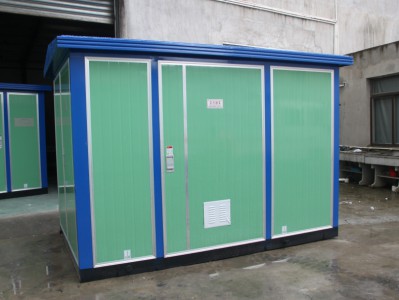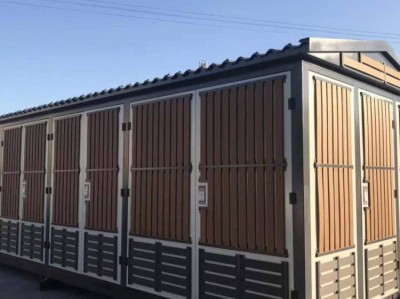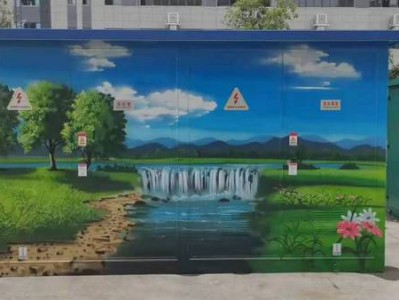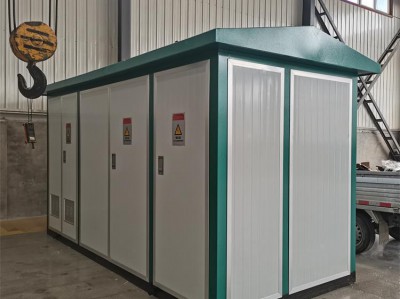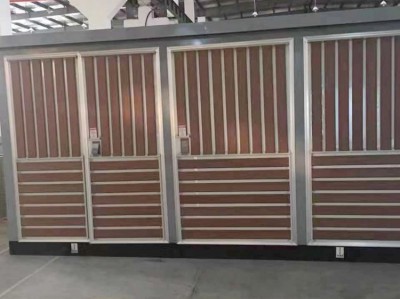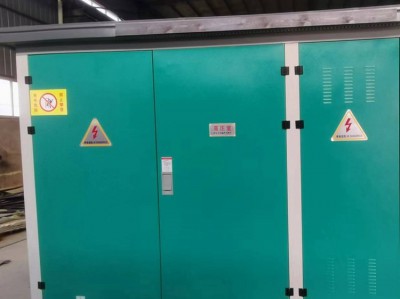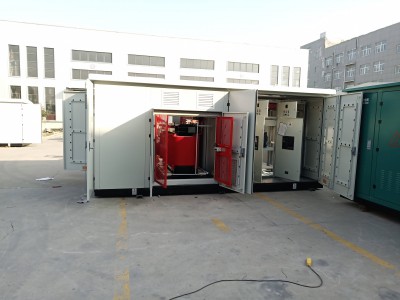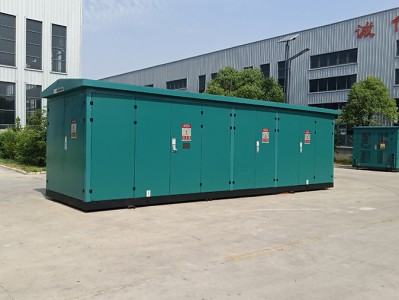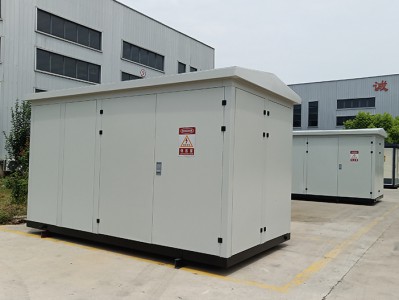American box-type substations
Product description
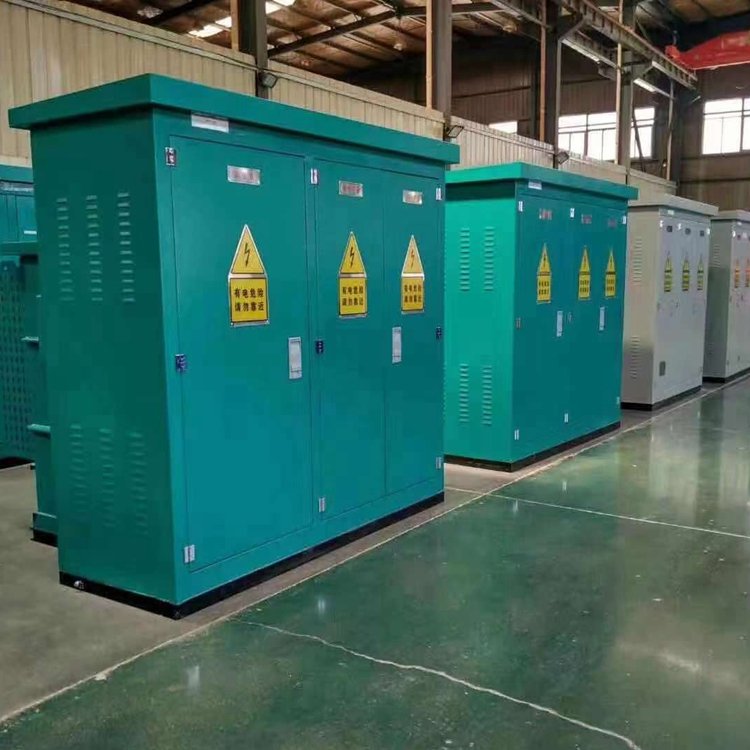 The following is a detailed introduction to American box-type substations:
The following is a detailed introduction to American box-type substations:
### I. Structural Features
1. **Compact integrated design**
- American box-type transformers combine transformers, high-voltage load switches, fuses and other equipment in a compact box. This integrated design reduces the floor area. For example, in small substations in cities and distribution rooms in residential areas where space is limited, it can effectively save space and is convenient for overall installation and transportation.
- The box body is made of a sturdy metal structure and has good sealing and protection performance. Generally, it can reach a protection level of IP33 or higher, which can prevent external factors such as dust and rain from affecting the internal equipment and ensure the stable operation of the equipment in an outdoor environment.
2. **Oil-immersed structure (partially)**
- Many American box-type transformers use oil-immersed transformers as the core component. The oil-immersed structure is beneficial for heat dissipation. The transformer oil can conduct the heat generated by the iron core and windings to the tank wall and then dissipate it to the external environment through the tank wall. At the same time, the oil also plays an insulating role, improving the internal insulation performance of the transformer and reducing the possibility of electrical faults.
3. **Layout of high-voltage side equipment**
- Inside the box, the high-voltage side is usually equipped with equipment such as load switches and fuses. The load switch is used to cut off and connect the load current, which is convenient to operate and has a certain short-circuit protection ability. The fuse quickly cuts off the current in the event of a short circuit or other faults to protect the safety of the transformer and other equipment. These equipments are compactly laid out and cooperate with each other through reasonable electrical connections and mechanical structures to realize the control and protection functions on the high-voltage side.
II. Technical Parameters
1. **Rated voltage**
- The common rated voltages on the high-voltage side are 10kV, 35kV, etc., which can adapt to the requirements of distribution networks of different voltage levels. The rated voltage on the low-voltage side is generally 0.4kV, which is mainly used to provide low-voltage power to the user side and meet the power consumption needs of civil, commercial and small industrial users.
2. **Rated capacity**
- The rated capacity range is wide, ranging from several hundred kVA (such as 315kVA) to several thousand kVA (such as 2000kVA). Different rated capacities can be selected according to the actual size of the power consumption load. For example, small communities or commercial blocks may choose American box-type transformers with smaller capacities, while large factories or industrial parks may need larger-capacity equipment.
3. **Connection group label**
- Common connection group labels include Dyn11, etc. The Dyn11 connection group label has better performance under asymmetric loads, can effectively suppress third harmonics, improve power quality, and is suitable for occasions where the load changes greatly and there are certain requirements for power quality.
4. **Short-circuit impedance**
- The short-circuit impedance is generally about 4% - 6%. A reasonable short-circuit impedance value can limit the size of the short-circuit current when a short-circuit fault occurs, protect the transformer itself and other connected electrical equipment. At the same time, during normal operation, it helps the transformer match with the power grid and load to ensure the stable transmission and distribution of electric energy.
III. Environmental Requirements for Use
1. **Temperature range**
- Generally, it is required to work normally at an ambient temperature of -25℃ - +40℃. In a low-temperature environment, the fluidity of transformer oil and the starting performance of equipment need to be considered; in a high-temperature environment, it is necessary to ensure that the heat dissipation measures can effectively reduce the internal temperature of the equipment and prevent the normal operation and service life of the equipment from being affected by overheating.
2. **Humidity requirements**
- The relative humidity is generally required not to exceed 90% (monthly average) and 95% (daily average). A high-humidity environment may cause a decrease in the insulation performance of the equipment. Therefore, in areas with high humidity, such as coastal areas or under humid climatic conditions, moisture-proof measures need to be taken for the equipment, such as strengthening sealing and using moisture-proof materials.
3. **Altitude limit**
- Generally, the altitude does not exceed 1000m. If the altitude exceeds this height, due to factors such as reduced atmospheric pressure and thin air, the insulation performance and heat dissipation performance of the equipment will be affected. When used in high-altitude areas, special design or adjustment of the equipment may be required, such as increasing the insulation distance and strengthening heat dissipation measures.
4. **Adaptation to pollution level**
- According to different usage areas, different pollution levels need to be adapted. In areas with a high pollution level, such as areas with serious industrial pollution or more dust, the external insulation surface of the equipment is prone to accumulate dirt and reduce insulation performance. At this time, corresponding measures need to be taken, such as increasing the creepage distance and performing regular cleaning and maintenance to ensure the normal operation of the equipment.
IV. Application Scenarios
1. **Residential communities**
- In residential communities, American box-type transformers are a common power distribution equipment. It can convert the high-voltage electricity from the urban distribution network into the low-voltage electricity required for residents' lives and provide stable power supply for residences, street lights, elevators, fire-fighting equipment, etc. in the community. Due to its compact structure and low noise level, it is suitable for installation near corners or green areas of the community, without occupying too much space and having little impact on residents' lives.
2. **Commercial buildings and small industrial plants**
- For commercial buildings (such as shopping malls, office buildings, etc.) and small industrial plants, American box-type transformers can meet their power consumption needs. It can provide reliable power support for lighting, air conditioning, elevators, cashier equipment, etc. in commercial buildings and production equipment and office equipment in small industrial plants. At the same time, its characteristics of convenient installation and strong expandability make it easy to expand capacity or upgrade equipment according to the needs of commercial or industrial development.
3. **Temporary power consumption places**
- In some temporary power consumption places, such as construction sites and temporary event venues (such as music festivals, exhibitions, etc.), the advantages of American box-type transformers are more obvious. It can be quickly installed and put into use to meet temporary power needs. In construction sites, it supplies power to various construction machinery, lighting equipment, etc.; in temporary event venues, it provides power guarantee for stage equipment, catering equipment, lighting and audio equipment, etc.

